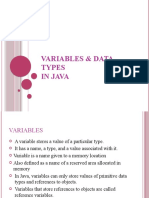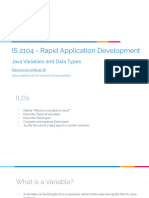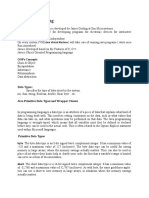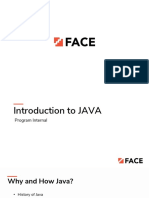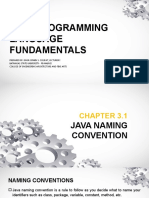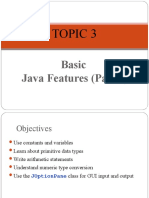0% found this document useful (0 votes)
72 views24 pagesJava Variables & Data Types Guide
The output would be:
c=19
d=36
e=15
When we prefix a numerical value with 0, Java treats it as an octal (base-8) integer literal representation.
Uploaded by
rabexa4689Copyright
© © All Rights Reserved
We take content rights seriously. If you suspect this is your content, claim it here.
Available Formats
Download as PDF, TXT or read online on Scribd
0% found this document useful (0 votes)
72 views24 pagesJava Variables & Data Types Guide
The output would be:
c=19
d=36
e=15
When we prefix a numerical value with 0, Java treats it as an octal (base-8) integer literal representation.
Uploaded by
rabexa4689Copyright
© © All Rights Reserved
We take content rights seriously. If you suspect this is your content, claim it here.
Available Formats
Download as PDF, TXT or read online on Scribd
/ 24











